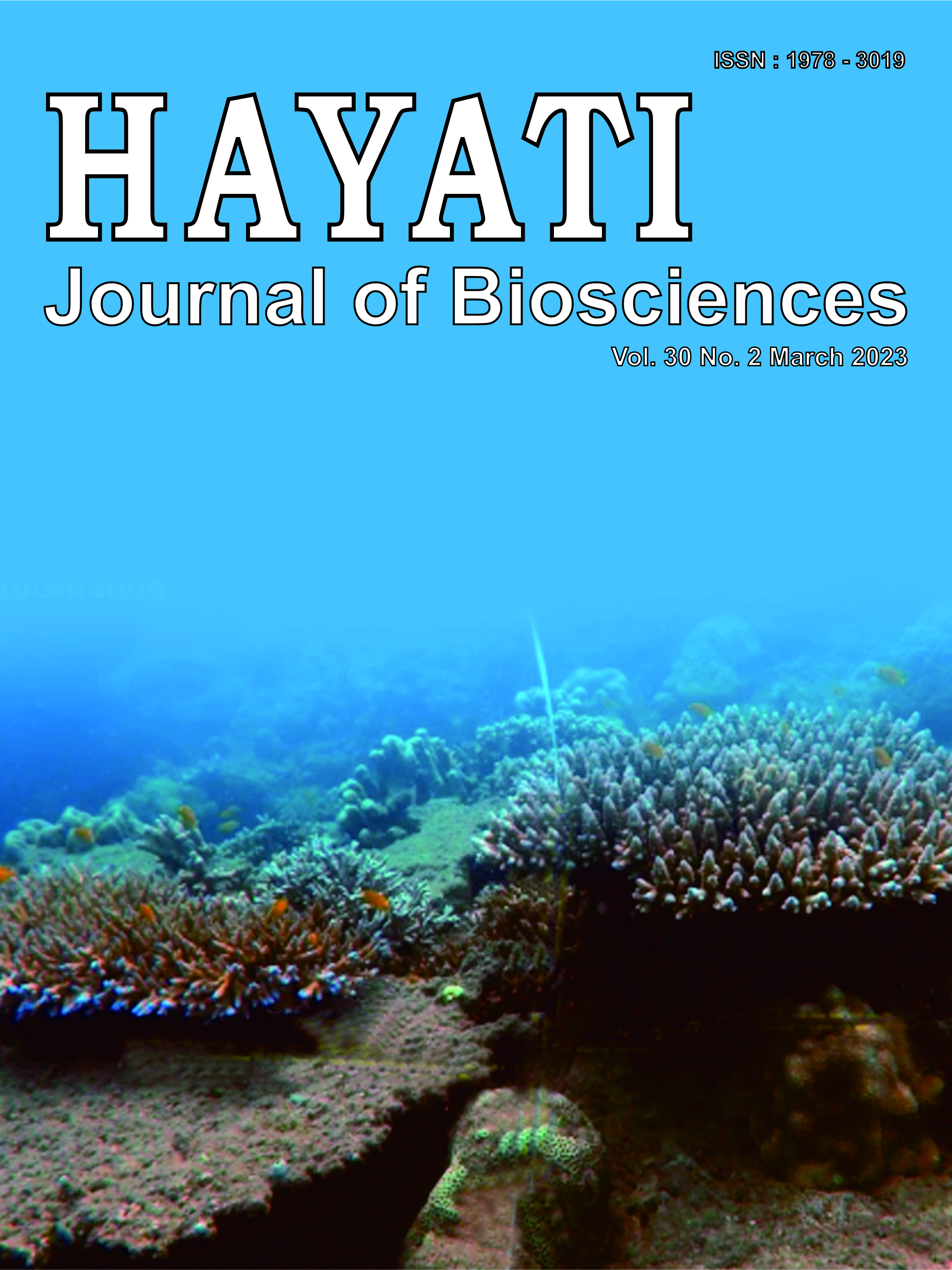Genotype-Environment Interaction and Yield Stability of Upland Rice in Intercropping Cultivation
Abstract
Rice cultivation as intercropping in plantations is a potential approach to increase land resource efficiency. Implementation of rice intercropping would require genotypes adapted to shaded environments. This study aimed to clarify the interaction of genotype and environment on agronomic characteristics of upland rice grown under intercropping system and to identify suitable genotypes for this particular cropping system. Multi-location trials evaluated twelve upland rice lines and two check varieties in eight upland sites during the wet season (WS) 2015-2016. Rice was grown as intercropping in six sites and as monoculture in two sites. Rice as intercrop was cultivated in between plantations of tall coconut, rambutan, teak, albizia, and natural rubber. The result of this study revealed that the interaction between genotype and environment was significant for all agronomic characteristics. The genotype B12056F-TB-1-29-1 was the best performer when grown as intercropping in Subang and Indramayu, with shading intensities of 65% and 44%, respectively. The genotype B11908F-TB-3-WN-1 was the best yielder in Cianjur and Lampung Tengah, which had 37% and 54% shading intensity, respectively. The genotype B12825E-TB-2-4 was the best performer in Lampung Timur with shading intensity of 45%, while Jatiluhur was the best genotype in Banyumas with shading intensity of 82%. The yield of rice genotypes grown as monocultures was higher than as intercropping. Among the genotypes, B12056F-TB-1-29-1 showed the highest yield across sites. Stable and high-yield genotypes identified from this study are expected to be adopted by farmers for intercropping rice cultivation.
Downloads
Copyright (c) 2023 Aris Hairmansis, Supartopo, Yullianida, Nafisah, Rini Hermanasari, Angelita Puji Lestari, Suwarno

This work is licensed under a Creative Commons Attribution-NonCommercial 4.0 International License.
HAYATI J Biosci is an open access journal and the article's license is CC-BY-NC. This license lets others distribute, remix, tweak, and build upon author's work, as long as they credit the original creation. Authors retain copyright and grant the journal/publisher non exclusive publishing rights with the work simultaneously licensed under a https://creativecommons.org/

























.png) IPB University
IPB University Department of Biology
Department of Biology The Indonesian Biological Society
The Indonesian Biological Society 

